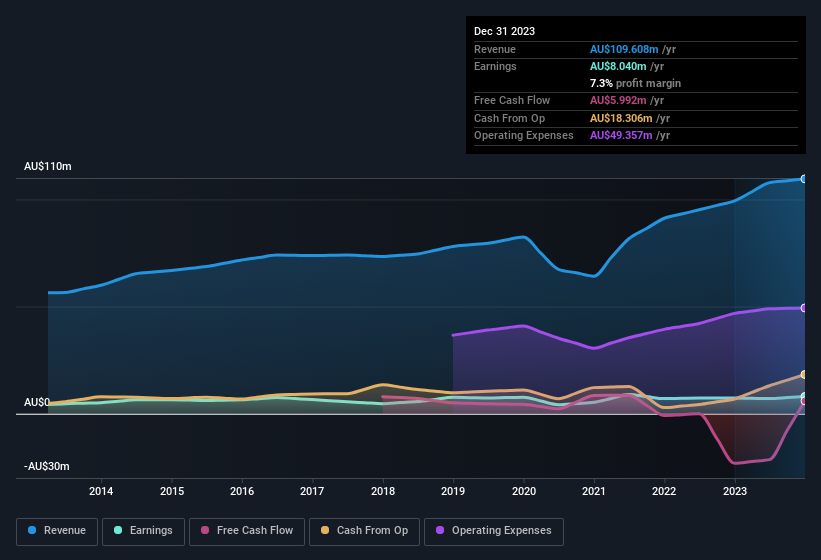With EPS Growth And More, SDI (ASX:SDI) Makes An Interesting Case
Investors are often guided by the idea of discovering 'the next big thing', even if that means buying 'story stocks' without any revenue, let alone profit. Unfortunately, these high risk investments often have little probability of ever paying off, and many investors pay a price to learn their lesson. While a well funded company may sustain losses for years, it will need to generate a profit eventually, or else investors will move on and the company will wither away.
Despite being in the age of tech-stock blue-sky investing, many investors still adopt a more traditional strategy; buying shares in profitable companies like SDI (ASX:SDI). Even if this company is fairly valued by the market, investors would agree that generating consistent profits will continue to provide SDI with the means to add long-term value to shareholders.
View our latest analysis for SDI
SDI's Earnings Per Share Are Growing
If a company can keep growing earnings per share (EPS) long enough, its share price should eventually follow. That makes EPS growth an attractive quality for any company. Over the last three years, SDI has grown EPS by 15% per year. That growth rate is fairly good, assuming the company can keep it up.
Top-line growth is a great indicator that growth is sustainable, and combined with a high earnings before interest and taxation (EBIT) margin, it's a great way for a company to maintain a competitive advantage in the market. The good news is that SDI is growing revenues, and EBIT margins improved by 2.1 percentage points to 11%, over the last year. Both of which are great metrics to check off for potential growth.
The chart below shows how the company's bottom and top lines have progressed over time. Click on the chart to see the exact numbers.
Since SDI is no giant, with a market capitalisation of AU$102m, you should definitely check its cash and debt before getting too excited about its prospects.
Are SDI Insiders Aligned With All Shareholders?
Investors are always searching for a vote of confidence in the companies they hold and insider buying is one of the key indicators for optimism on the market. Because often, the purchase of stock is a sign that the buyer views it as undervalued. Of course, we can never be sure what insiders are thinking, we can only judge their actions.
The good news for SDI shareholders is that no insiders reported selling shares in the last year. So it's definitely nice that CFO, COO John Slaviero bought AU$26k worth of shares at an average price of around AU$0.82. It seems that at least one insider is prepared to show the market there is potential within SDI.
On top of the insider buying, we can also see that SDI insiders own a large chunk of the company. Indeed, with a collective holding of 56%, company insiders are in control and have plenty of capital behind the venture. This makes it apparent they will be incentivised to plan for the long term - a positive for shareholders with a sit and hold strategy. With that sort of holding, insiders have about AU$57m riding on the stock, at current prices. That should be more than enough to keep them focussed on creating shareholder value!
Should You Add SDI To Your Watchlist?
One important encouraging feature of SDI is that it is growing profits. On top of that, we've seen insiders buying shares even though they already own plenty. These factors alone make the company an interesting prospect for your watchlist, as well as continuing research. Even so, be aware that SDI is showing 2 warning signs in our investment analysis , you should know about...
Keen growth investors love to see insider buying. Thankfully, SDI isn't the only one. You can see a a curated list of Australian companies which have exhibited consistent growth accompanied by recent insider buying.
Please note the insider transactions discussed in this article refer to reportable transactions in the relevant jurisdiction.
Have feedback on this article? Concerned about the content? Get in touch with us directly. Alternatively, email editorial-team (at) simplywallst.com.
This article by Simply Wall St is general in nature. We provide commentary based on historical data and analyst forecasts only using an unbiased methodology and our articles are not intended to be financial advice. It does not constitute a recommendation to buy or sell any stock, and does not take account of your objectives, or your financial situation. We aim to bring you long-term focused analysis driven by fundamental data. Note that our analysis may not factor in the latest price-sensitive company announcements or qualitative material. Simply Wall St has no position in any stocks mentioned.

